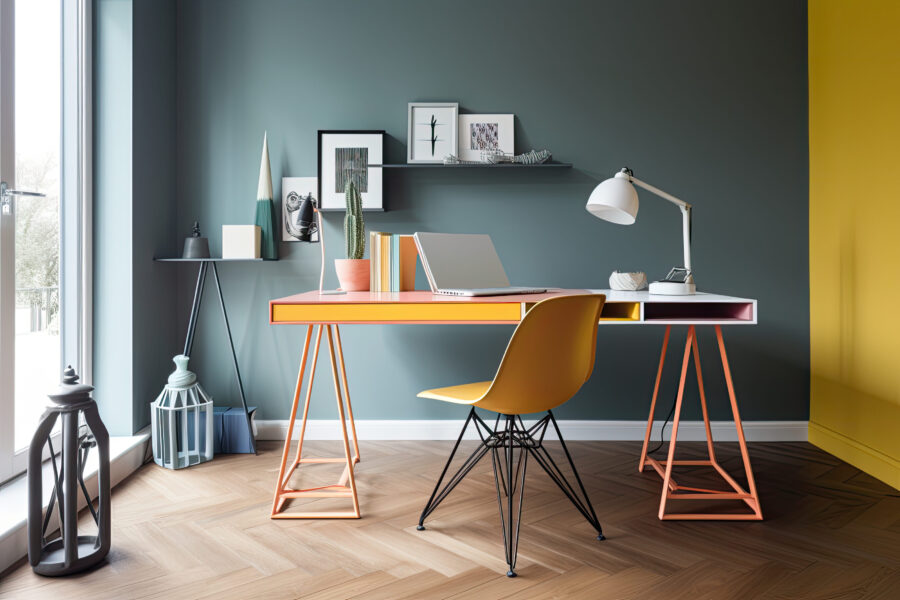In 2020, when much of the world abruptly began working from home, everyone began carving out home office spaces in their home. But a desk shoved into a corner of your bedroom or living room isn’t necessarily the best we can do. Amber Dunford is a design psychologist and style director, and she has strong feelings about home offices.
“It is psychologically really important to be able to shut down at the end of the day and not see your work,” says Dunford. These are some tips she offers to create that crucial distance.
Create Visual Separation
Physical separation of your workspace from your home space is ideal. But if you’re not fortunate enough to have a door you can close at 5 p.m., there are still ways to create visual separation that signals to your brain that the workday is over. Dunford recommends using a partition, a different-colored rug, or plant dividers to make the space feel separate.
Reduce Clutter
Clutter is one of the biggest challenges in any workspace, but at home, the chances of it are even greater when your desk can become a dumping ground for laundry that needs folding, unopened mail, and work documents.
“Having some storage solutions is huge,” says Dunford. “We are really stressed around clutter.”
Clutter reduction starts with a good desk. Open desks are beautiful but impractical, especially in a multipurpose space. A desk with drawers and other storage that is out of sight is best. Dunford also recommends a wheeled filing cabinet that could be kept in a closet or a credenza that could double as a side table after hours.
Create Routines for Balance
Your home office can also help shape healthy work routines to get you out of bad habits like answering emails just before bed. To replace the physical and mental separation that a commute used to provide, Dunford recommends creating new routines.
“Just like a sleep routine, it’s really important to have your work routine,” she says. “This signals my brain that it’s time to work or at the end of the day, I do a routine that signals to my brain we’re shutting down and we’re switching gears.”
That routine might include getting your cup of coffee and, turning on a desk lamp in the morning, shutting off your computer and, if you work on a laptop, putting it out of sight into a drawer in the evening.
Add a Personal Touch
Studies have shown that in-office employees who can decorate their cubicles are happier and more productive. The same goes for your home office; personalization can be motivating and satisfying during the workday. Dunford also recommends having something non-work related nearby to cleanse your brain between meetings, like a guitar you can strum a quick tune on or a sketchbook to doodle.
“There’s this thing about Einstein, when he would get stuck on a math equation, he would play the violin. It’s actually really helpful for our brain to bump into the other side of our brain so even having a little spot where you can stretch or do a crossword puzzle is great.”



 2 min read
2 min read



